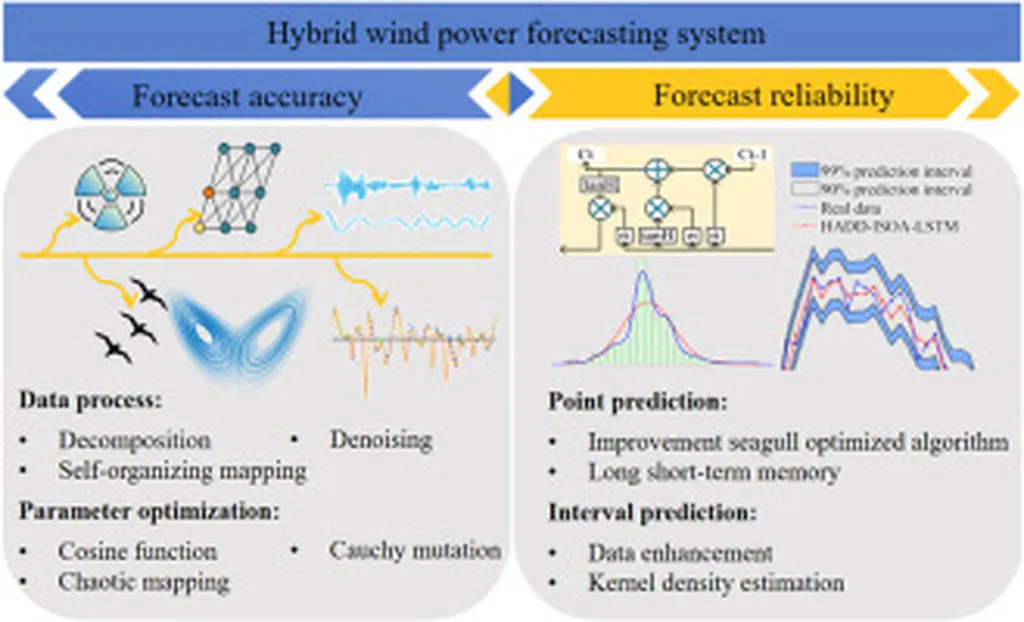In the quest for cleaner energy, wind power has emerged as a cornerstone, but its intermittent nature poses significant challenges for grid management. Accurate forecasting of wind power generation is crucial for maintaining grid stability and facilitating the transition to low-carbon energy systems. A recent study published in the journal *Mathematics* (translated from the original title) offers a promising solution to enhance the precision of wind power predictions, potentially revolutionizing the energy sector.
Lele Wang, a researcher at the College of Information Management, Nanjing Agricultural University, and lead author of the study, has developed a novel hybrid model that combines an optimized escape algorithm (OPESC) with a convolutional neural network (CNN), a bidirectional long short-term memory (BiLSTM) network, and a self-attention (SA) mechanism. This sophisticated model aims to address the inherent nonlinearity and randomness of wind dynamics, which have historically plagued forecasting accuracy.
“The key challenge in wind power forecasting lies in the complex and dynamic nature of wind patterns,” Wang explained. “Our model integrates spatial and temporal features more effectively, leveraging the strengths of each component to capture the nuances of wind energy generation.”
The OPESC-CNN-BiLSTM-SA model optimizes critical hyperparameters, such as the learning rate and the number of BiLSTM hidden units, to improve model generalization. The CNN extracts spatial features from the data, while the BiLSTM captures bidirectional temporal dependencies. The self-attention mechanism dynamically weights important features, ensuring that the model adapts to changing conditions.
Testing the model on real wind farm data yielded impressive results. The study reported a 30.07% reduction in root mean square error (RMSE) and a 34.51% reduction in mean absolute error (MAE), achieving an R² value of 97.06% compared to the baseline. These improvements highlight the model’s potential to significantly enhance the accuracy of wind power forecasting.
For the energy sector, the implications are substantial. Accurate forecasting allows grid operators to better manage power distribution, reduce reliance on backup energy sources, and integrate more renewable energy into the grid. This can lead to cost savings, improved grid stability, and a more sustainable energy future.
“The energy sector is constantly seeking innovative solutions to improve forecasting accuracy,” Wang noted. “Our model provides a robust framework that can be adapted to various wind farms, offering a scalable solution for the industry.”
As the world continues to transition towards renewable energy, advancements in forecasting technology will play a pivotal role. The OPESC-CNN-BiLSTM-SA model represents a significant step forward, demonstrating the potential of advanced machine learning techniques to address the complexities of wind power generation.
This research not only enhances our understanding of wind power forecasting but also paves the way for future developments in the field. By integrating cutting-edge algorithms and optimizing key parameters, the study offers a blueprint for improving the accuracy and reliability of renewable energy predictions, ultimately supporting the global shift towards a low-carbon economy.

